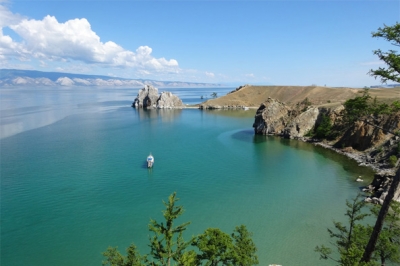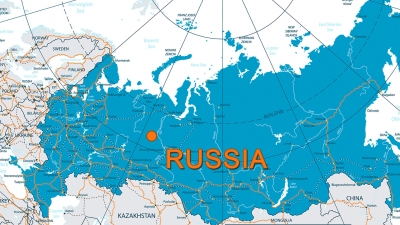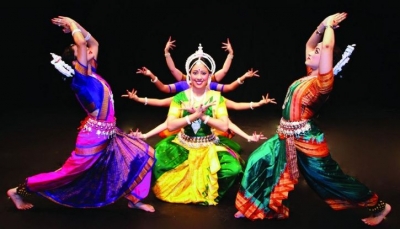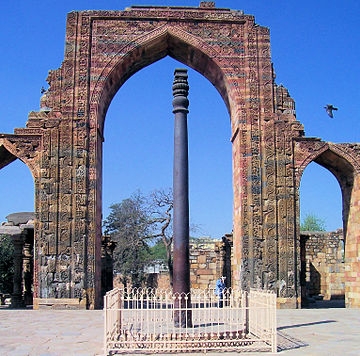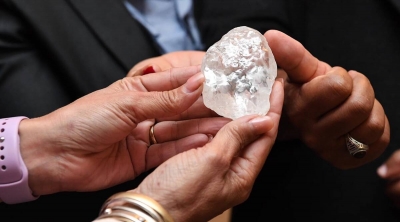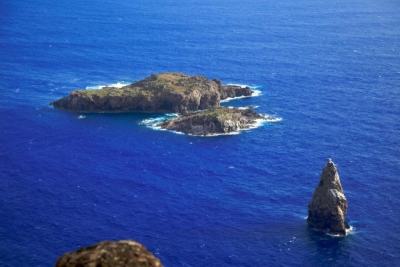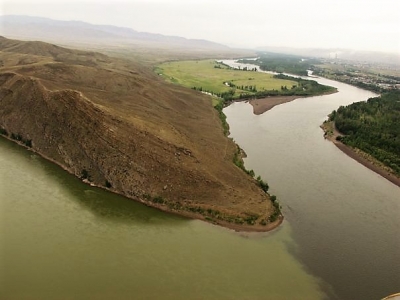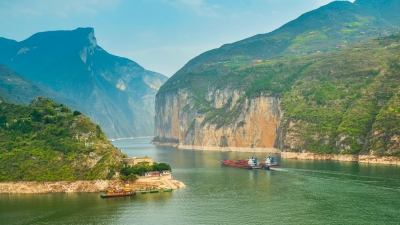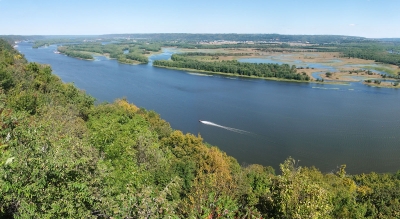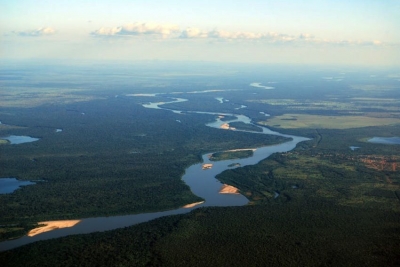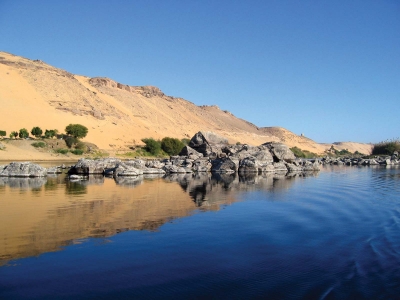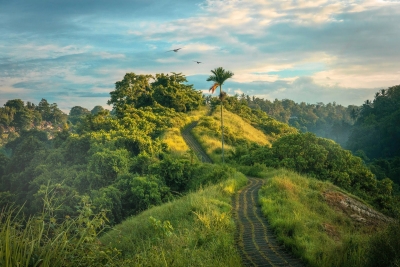
Tripura, the third smallest state in the country, is coyly located on the North-eastern most part of India, cuddled as it were on the north, south and west by Bangladesh. A little bit of its border in the East and Northeast, however, is left to Mizoram and Assam.
Decades ago, Tripura used to be referred to as inaccessible, geographically isolated and remote. Not anymore. Today it has the second busiest airport in the region, with only Guwahati ahead of it; its capital city Agartala is, population-wise, the second biggest city in the region, and well connected by road, rail, air, and lately by waterways too, thereby ridding itself of the stigma of being a land-locked state.
Its undulating hills sensuously clad in lush greenery conceal an ancient culture, one that is characterized by a heady mixture of gods, legends, myths, fables and folklores on the one hand, and on the other, a long line of actual flesh and blood kings, wars, struggles and earthy engagement of an entire people with nature and destiny.
The very location of Tripura 'on the other side of Bangladesh' can sound unnerving to someone not familiar with the geography of these areas. Flanked by Bangladesh on three sides, this enchanting landmass of 10,491.69 square kms is home to 3,671,032 residents (2011) who constitute 0.3% of the country's population.
Glorious past
The State of Tripura was one of the ancient princely States of India. According to the royal chronicles called Rajmala, Tripura was continuously ruled by as many as 184 Tripuri kings with sovereign and independent status prior to its merger with the Indian Union in 1949. At the time of the death of the last ruling King, Bir Bikram Kishore Deb Barman in 1947, his successor Kirit Bikram Kishore Deb Barman was hardly 12 years old, and therefore a Council of Regency was formed to run the administration under the presidency of Queen Kanchan Prava Devi, mother of Kirit Bikram Kishore Deb Barman
Among those who ruled Tripura, the Manikya dynasty is the most prominent. Since the early 15th century, it was the Manikya dynasty that ruled the Twipra Kingdom and later the princely Tripura State. At its height the dynasty controlled a large swathe of the north-east of the Indian subcontinent. After coming under British influence, in 1761 they transitioned from feudal monarchs into rulers of a princely State. The Manikyas maintained their control of the region until 1949, the year of merger with India.Kirit Pradyot Manikya Deb Barma Bahadur is the current head of Tripura Royal Family and is the 186th King Titular. He is the son of Kiri Bikram Kishore Manikya.
Ethnic mosaic
Today, indigenous communities consisting of 19 tribes and many sub-tribes form about 30 per cent of the state's population. They are broadly classified on the basis of language into Kokborok group of tribes, the Bru tribe and Halam group of tribes. With each tribe having its own distinctive forms of cultural expression - music, dance, attire, folklore and festival, it is no wonder Tripura is an invaluable storehouse of culture, traditions and ethnic diversity. The rich culture of the Bengali people who form the ethno-linguistic majority of the State further enriches the beauty and wealth of this tiny State.
Some of the tribes residing in Tripura are: Tripuri, Jamatia, Reang, Molsom, Chakma, Halam, Garo, Lushai, Darlong.
HUK 'the hearth' of culture
That Tripuri culture is predominantly agrarian in nature is clear from its folklores most of which happen in agricultural settings. Although more than half its population depends on agriculture, only about 27% of its land is available for cultivation, large swathes of land being under forest cover. Nevertheless 'huk' or the jhum cultivation traditionally practised by large number of indigenous population not only provided them with provisions needed for daily living but also became the mise en-scene in which many a drama of life unfolded. Scarcity of land and arrival of more sophisticated methods of cultivation have now considerably reduced the number of people dependent on huk.
Bamboo is a very important factor in the life and culture of the Tripura's indigenous population. They double up as just about anything that situation demands. From cutting the umbilical cord of the new born to preparation of the cremation pyre, bamboo is used. Bamboo technology has also considerably developed, thanks to initiatives by agencies like Bamboo Mission. Engaging in production of Bamboo handicrafts and furniture have today become profitable means of earning livelihood.
Gairing is a temporary watch house built on one's jhum field. The place of huk often being far from one's village and home, a work-place shelter that protects one from the elements and from wild animals is essential. Gairing is also the subject of many folklores of the Tripuri people.
Agriculture
In addition to rice which is the major crop of the state, other crops are also cultivated. Tripura pineapples are known widely and have even been exported to foreign countries in the recent years.
On the rubber map of India, Tripura occupies a pivotal position. With large areas of rural Tripura coming under rubber plantation, the state has become the second highest rubber cultivating and producing state in India. Rubber cultivation has certainly enhanced the economic prowess of those sections of the population who were able to take advantage of the opportunity.
Music and dance
Like other North-eastern tribes, music and dance are an integral part of the life of Tiprasa too. Every tribe in Tripura can boast of its own songs, and its own dances. Some of the more well-known dances are: Goria dance is performed during Goria puja. Garia is an indigenous deity believed in by the Tripuri tribe and the Jamatia tribe.
Tangbiti dance is performed during the harvest season. Lebang, Mamita, and Mosak Sulmani are other dances connected to cultivation and harvest. Hojagiri dance is the unique and well known dance of Reang tribe. This dance performed by young girls, who while gracefully swaying their waist to the beat of the drum performs many acrobatic feats including balancing oneself atop an earthen pitcher and bending backwards to pick up with their teeth a kerchief placed on the ground. The Bizhu dance is performed by the Chakmas during the Bizhu festival (the last day of the month of Chaitra). Other tribal dances are Wangala dance of the Garo people, Hai-hak dance of the Halam branch of Kuki people, Sangrai dance and Owa dance of the Mog tribe, and others.
A complex form of music called 'Jaduni' is the traditional music form of the Kokborok speaking tribes. It is said that 'Jaduni' or 'jadu kolija' was used for all sorts of social interactions and expressions such as courtship, marriage proposal, mourning, lullaby, story-telling, etc. It is a pity that 'Jaduni' has nearly become extinct. However, in recent years efforts have been made to revive this intriguing and unique art form.
According to Tripuri tradition there are nine different ways of contracting a marriage. They are the following: Nok kaisa Kaimung (Marriage by exchange), Kharlai Kaijakmani (Marriage by elopement), Phuisai Tubuma (Marriage by purchase), Koklam Kwrwi Kaimung (Marriage by capture), Hamjaklai Kaijakmani (Marriage by love), Siklasogya kaimani (Child marriage), Chamariomor (Marriage by service), Chamariompa, Sundul phulmani (Widow re-marriage).
Must-see places in Tripura
Although Tripura is small in area it is a rich storehouse of natural beauty, ethnic wealth, diversity and tradition. Its hills and plains, meadows and valleys, lakes and rivers, flora and fauna, wildlife and forests, have a measure of pristine freshness and grandeur about it. Home to rich wildlife, one often hears from within its thick forests a cacophony of jungle music indicating the presence of bears, wolves, elephants, leopards, monkeys and of course numerous birds.
Thanks to its ancient history, Tripura today has numerous buildings of historical importance, some of them architectural masterpieces. They attract tourists from all parts of the country. We take a quick look at some of them.
Ujjayanta Palace: The present-day Ujjayanta Palace was built between 1899 and 1901 by Maharaja Radha Kishore Manikya Debbarma after the original palace was destroyed by a massive earthquake in 1897. Standing majestically on the banks of two lakes surrounded by gorgeous European styled gardens the palace was the home of the ruling Manikya dynasty until Tripura's merger into India in October 1949. It is now a State Museum and primarily showcases the lifestyle, arts, culture, tradition and utility crafts of communities residing in northeast India, along with a lot of stone sculptures, coinage of the Manikya dynasty and some other artifacts. It is believed the Nobel laureate Rabindranath Tagore gave the palace its name.
Neermahal: Built by Maharaja Bir Bikram Kishore Manikya between 1930 and 1938, in the middle of the lake Twijilikma at Melaghar, 53 kilometres away from Agartala, Neermahal Palace or water palace was designed to serve as his summer residence. The heavily ornate structureis said to resemble Jag Niwas Palace in Udaipur, Rajasthan, in terms of architectural style and design. Numerous migratory birds are sighted at Neermahal in certain seasons. Neermahal is a regular stopover for every tourist who comes to Tripura.
Unakoti: Unakoti, an archaeological site located in the Kailasahar subdivision of Tripura, is a visual treat for all but especially those who have a penchant for archeology. Giant-sized rock carvings spread across a significant area are a marvel to behold and are said to date back to the 7th century AD. Unakoti in Bengali means ‘one less than a crore’. According to Hindu mythology that has come to be associated with the place, it is believed that there are unakoti carvings found there, one for each of the gods and goddesses that were turned into stone by the curse of Lord Shiva.
Matarbari: Matarbari or Tripureshwari Temple of Tripura is one of the major Shakti Peethas in the country and therefore held in great reverence by devotees. Situated at Udaipur, erstwhile capital of the Tripura at the time of the Maharajas, the temple is visited by large numbers of people from near and far. The city of Udaipur, third biggest in the State, is also called 'Lake City' after the many lakes found in it.
Well-known personalities of Tripura
The annals of Tripura's history contain names of many extraordinary people who have achieved excellence in one field or other. Legendary music directors like S. D. Burman, for example, who was from Tripura's royal family. In sports, particularly swimming, quite a few from Tripura have excelled. Given below are just three 'young people who belong to the present times and have made it to international status.
Somdev Kishore Devvarman (b. 1985): Somdev is a former professional Indian tennis player whose best achievement on the ATP World Tour was reaching the final of the Chennai Open in 2009, as a wild card entry. In 2010, Somdev won the gold medal in the men's singles event of XIXth Commonwealth Games in New Delhi, and he followed it up with both men's singles and doubles gold in the 2010 Asian Games in Guangzhou, China.
Sourabhee Debbarma (b.1985): Sourabhee became the first female Indian Idol winner. She is also a Guinness World record holder. Versatile Sourabhee is a singer, performer and entertainer who has performed across India and abroad. Countries where Sourabhee has performed include Hong Kong, Nigeria, Durban, New York City, London, Kuwait, Bangladesh and Nepal.
Dipa Karmakar (b.1993): The first Indian woman and the second person from the country to clinch a Commonwealth Games medal in artistic gymnastics. She also won a bronze medal at the Asian Gymnastics Championships and finished fifth at the 2015 World Artistic Gymnastics Championships, both firsts for her country. Karmakar represented India at the 2016 Summer Olympics in Rio de Janeiro, becoming the first Indian female gymnast ever to compete in the Olympics. She missed the bronze medal by a narrow margin finishing fourth in Women's Vault gymnastics event.
Credit : Joseph Pulinthanath (The Teenager Today)
Picture Credit : Google
